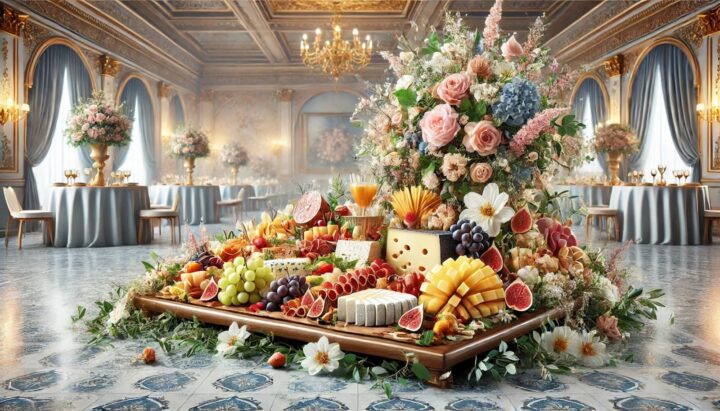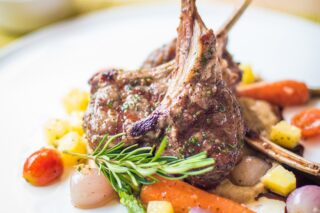Creating the perfect platter for a buffet-style event is both an art and a practical challenge. At any gathering, the buffet table is often the centerpiece, drawing guests with an array of colors, textures, and flavors. A well-assembled platter not only satisfies the palate but also enhances the overall ambiance of the event. This guide aims to provide comprehensive insights into crafting platters that are not only delicious and appealing but also catered to the preferences and dietary needs of all attendees. Whether you’re planning a corporate function, a family reunion, or a casual get-together, the right platter can make a significant impact on your event’s success.
Understanding the intricacies involved in selecting the right ingredients, choosing a theme, and arranging them beautifully is crucial. A thoughtfully designed platter invites guests to try a variety of offerings and can even become a conversation starter. This article will walk you through the essential steps of selecting the perfect base for your platter, choosing a harmonious mix of ingredients, and presenting them in a way that is both practical and pleasing to the eye. From aesthetic considerations to logistical details, you’ll learn how to assemble a platter that not only looks impressive but also keeps guests coming back for more.
Introduction of Buffet-style Event
A buffet-style event offers a versatile and engaging way to cater to a diverse group of guests, providing a spread of dishes that invite attendees to customize their dining experience. This style of dining is popular for its efficiency and the variety of options it offers, making it ideal for everything from casual gatherings to elegant receptions. At a buffet, guests are afforded the freedom to choose what they eat and how much, allowing them to indulge in their personal preferences while also encouraging them to try new and exciting dishes. This approach not only facilitates easier preparation and service for hosts but also enhances the social atmosphere of the event, as guests interact more freely around the buffet table.
Planning a successful buffet requires careful consideration of menu selection, layout, and flow to ensure a seamless experience for guests. The arrangement of the buffet table is critical, as it should promote easy access and minimize congestion. Dishes should be organized logically, with attention to maintaining the right temperature and presentation throughout the event. By focusing on these details, hosts can create a memorable and enjoyable dining experience that encourages guests to mingle, taste, and enjoy their time to the fullest. Whether for a wedding, corporate event, or family gathering, a well-executed buffet-style event is synonymous with abundance, variety, and communal dining pleasure.
Choosing the Right Platter
Choosing the right platter for a buffet-style event is a crucial decision that can influence both the functionality and the aesthetic appeal of your food presentation. The platter you select serves as the foundation for showcasing the dishes you offer, so it’s important to consider several factors to ensure your buffet is both attractive and practical.
Material Matters:
The material of the platter can significantly affect both its look and utility. Common choices include ceramic, which offers a classic and elegant appearance; glass, which provides a sleek, modern touch and allows the colors of the food to stand out; and wooden platters, which add a rustic charm ideal for more casual or outdoor events. Disposable platters made of bamboo or recyclable plastic are also popular for events where ease of cleanup is a priority, and they can be surprisingly stylish.
Size and Shape:
The size and shape of the platter should be tailored to the type of food being served as well as the space available on the buffet table. Larger, rectangular platters are ideal for accommodating bigger groups and can hold more food, reducing the need for frequent refilling. Round or oval platters, on the other hand, are perfect for serving circular dishes like cakes or pies and can add visual interest to the table setup. It’s also useful to have a variety of sizes and shapes to create levels and dimensions on the buffet table, making it more visually appealing and easier for guests to access different dishes.
When selecting platters, also consider their edges and depth. Platters with higher edges are suited for saucy dishes or salads that might spill, while flatter platters are perfect for arranged foods like charcuterie or cheese boards. Ultimately, the right platter not only complements the décor and theme of the event but also enhances the overall dining experience by making the food more accessible and appealing to guests.
Importance of Platters in Buffet-style Events
Platters play a pivotal role in buffet-style events, serving both functional and aesthetic purposes that greatly enhance the dining experience. Their importance cannot be overstated, as they are essential for effective presentation and service of food, impacting how guests interact with the buffet and perceive the overall quality of the event.
Visual Appeal:
Platters are critical in setting the visual tone of a buffet. They act as the canvas for food, and the choice of platter can complement the theme or decor of the event. A well-chosen platter enhances the colors and textures of the food, making dishes look more enticing and appetizing. The arrangement on platters can also be used to guide the eye and create focal points on the buffet table, helping to balance the layout and draw attention to signature dishes.
Functionality and Accessibility:
Beyond aesthetics, platters must be functional. They need to be large enough to hold a sufficient quantity of food to ensure that all guests have access without frequent replenishment, which can disrupt the flow of the event. The shape and depth of the platter are also important; for instance, shallow platters are ideal for easy access to finger foods, while deeper ones might be better suited for salads or dishes with sauces that could spill. The material of the platter also matters in terms of handling and temperature control. For example, metal platters can retain heat, ideal for warm dishes, whereas glass or ceramic might be better for cold items to stay chilled.
Efficiency in Service:
Platters influence the efficiency of the buffet service. A well-organized buffet table with strategically placed platters ensures a smooth flow of guests, preventing bottlenecks. This layout allows guests to quickly see and reach their preferred dishes, enhancing their overall experience and satisfaction. Additionally, platters can be designed to serve dual purposes, such as with built-in compartments for dips or toppings, which streamline the serving process and reduce the need for additional serving dishes.
Conclusion
Creating an effective platter for a buffet-style event is an art that combines aesthetics, functionality, and thoughtful consideration of the guests’ experience. The right platter not only enhances the visual appeal of the buffet table but also plays a crucial role in how efficiently and enjoyably guests can access and enjoy the food. From selecting the appropriate materials and sizes to suit the event’s style and scale, to arranging the food in a way that is both attractive and practical, every detail counts.
The ability to cater to diverse dietary preferences and the strategic placement of platters can significantly impact the overall success of the event. By keeping these elements in mind—material, size, theme, arrangement, and dietary considerations—hosts can ensure that their buffet not only looks impressive but also functions seamlessly, providing guests with a delightful and memorable dining experience. Whether it’s a formal gathering or a casual get-together, the care put into preparing and presenting platters reflects the host’s attention to detail and commitment to guest satisfaction.

